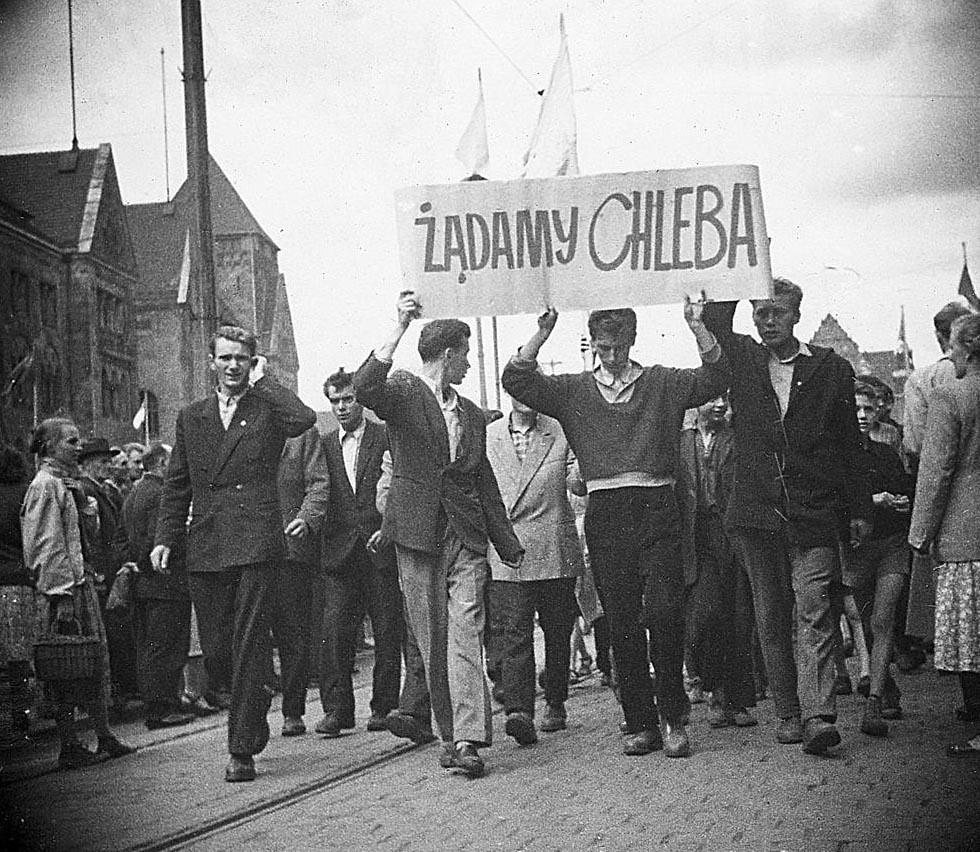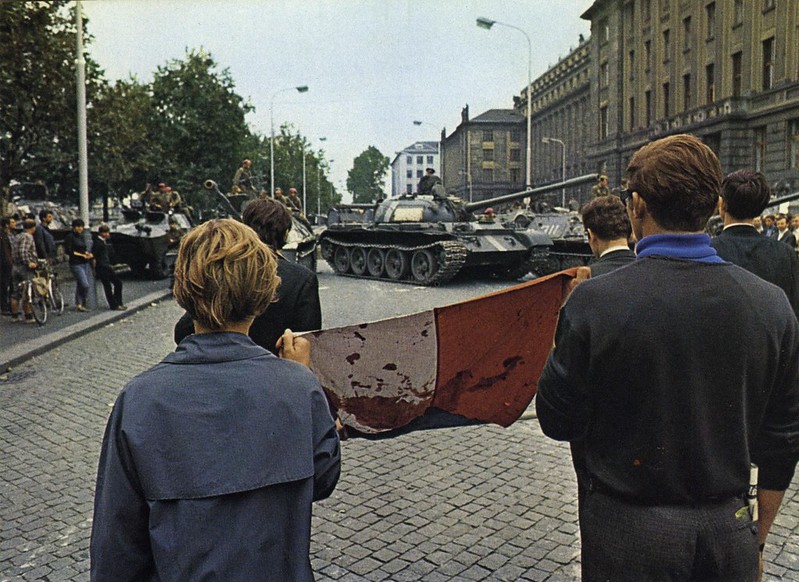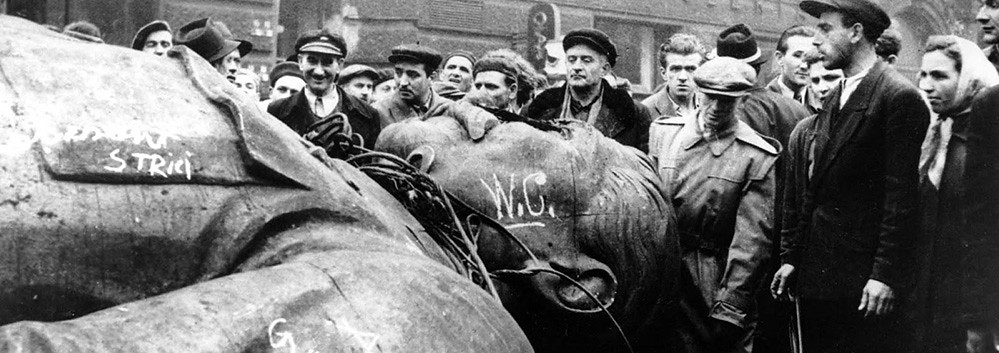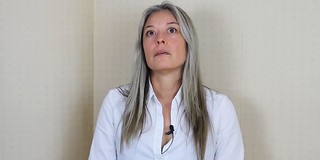From Tambov to Hungary: the anti-communist revolutions that many people do not know
Communism is a totalitarian movement against which many rebelled, facts that today are little known among the general public..
The media and academic cause of this ignorance
The cause of this ignorance is due, to a large extent, to the fact that the left is today the hegemonic political current in journalism and in the academic world. Much of that left continues to be inspired by the old Marxist scheme that divides society between oppressors and oppressed. A scheme in which it does not appear to have been for evidence that communism established one of the most oppressive systems in history. An oppression that was answered with popular rebellions from the beginning of the first communist dictatorship: the USSR.

The Russian anti-communist revolution of Tambov in 1920
The first major anti-communist rebellion broke out in Tambov, Russia, in August 1920, supported by Red Army deserters and by peasants fed up with the mass requisitions imposed by the Bolsheviks. Lenin, the first communist dictator, brutally crushed that rebellion with mass executions and internments in the Gulag, causing a total of 240,000 deaths.ç
The terror regime created by Lenin went further with Stalin, one of the greatest genocide in history, who after having divided Poland and the Baltic republics by Hitler in 1939, ended up dividing half of Europe with Roosevelt and Churchill in 1945, establishing puppet regimes who implanted the red terror in Poland, Hungary, Eats Germany, Czechoslovakia, Bulgaria and Romania. On Stalin's death on March 5, 1953, communism in Eastern Europe seemed to enter a milder phase after the horrors of the Stalinist purges. There was some hope for change. It was just a mirage.

The Norilsk Rebellion of 1953
One of the most unknown rebellions of those that occurred under the communist dictatorships took place in the Gulags of Gorlag and Norillag, near Norilsk, in Siberia, and was led mainly by Ukrainian, Georgian and Baltic political prisoners interned there, fed up with the 16-hour days, the mistreatment and the terrible conditions in which they lived. The rebellion began with a strike of 16,000 prisoners on May 26, 1953 and lasted 69 days, the largest and longest of the protests that were recorded in the Soviet network of Gulag concentration camps. The communist dictatorship ended up violently crushing the rebellion, executing 150 prisoners.

The East German Anti-Communist Revolution in 1953
In the Soviet-occupied countries, the first rebellion began on June 16 in East Berlin as a workers' protest. The next day 40,000 people demonstrated in the city, spreading the rebellion to hundreds of towns in communist Germany. The Soviets mobilized 20,000 soldiers to suppress the protest, killing 125 people and wounding more than 1,800. Most of those killed were executed after the protests. To these death toll we must add 18 Soviet soldiers who were executed for refusing to fire on protesters.

The Polish anti-communist revolution in Poznań in 1956
In 1956, anti-communist rebellions broke out in two other Soviet-occupied countries. Both took place in fervently Catholic countries. The first revolt broke out in Poznań, Poland, on June 28, and was carried out by workers in local industries, fed up with the poor living conditions and also the lack of freedom. That morning, a crowd of 100,000 protesters gathered in Adam Mickiewicz Square, encircling the government buildings and the headquarters of the single party of the communist dictatorship.
The communist regime's attempt to suppress the protest led to the protesters going on the offensive. They stormed the one-party headquarters, Młyńska Prison and Mrowino Prison Camp, freeing many prisoners and seizing the weapons depots they found there. To suppress the protest, the Polish communist dictatorship sent more than 10,000 soldiers and 400 tanks. The anti-communist uprising was finally put down on June 30. The repression resulted in 57 deaths and some 500 wounded.

The Hungarian Revolution of 1956 and the first demolition of a statue of Stalin
Despite being put down, the Polish rebellion in Poznań had a major impact on a country that maintains historical brotherhood ties with Poland: Hungary. On this day, October 23, 1956, a crowd of 200,000 Hungarians demonstrated in Budapest, carrying a Polish flag and Hungarian flags without the communist coat of arms to the monument to József Bem, a Polish patriot who had supported the Hungarian Revolution of 1848. During the protest, a hymn was sung that became popular in that revolution: the "Nemzeti dal" (National Song), prohibited by communism and whose second stanza read:
"Slaves we have been until now,
our damned ancestors,
who freely lived and died,
on slave soil they cannot rest.
To the God of the Hungarians
we swear that slaves more
we will not be!"
A part of the crowd led the Városliget Park, where there was a huge statue of Stalin made of bronze and erected in 1951. The statue was 8 meters high and was located on top of a monument whose height reached 10 meters. Despite its large dimensions, the statue of the genocide was demolished and beheaded, being covered with insulting graffiti.

Attempts by the dictatorship to suppress the protest led to it turning violent, sparking a revolution that called into question the communist regime. Without international support, the insurgents were finally overwhelmed on November 4 by a Soviet military intervention with more than 31,000 soldiers and 1,100 tanks. Despite being outnumbered and outnumbered, the insurgents fought heroically. The troops sent by the USSR met with strong resistance, suffering almost 700 casualties. The revolution was finally crushed, with 2,500 Hungarians killed, 20,000 wounded, 21,000 interned in concentration camps, and some 200,000 fleeing the country. Although today this revolution is the best known of those cited in this article, many Western countries have forgotten it in part due to a bad conscience of having done absolutely nothing to support the Hungarian people.

The other rebellions: from the Prague Spring to Solidarność
That of Hungary was not the last anti-communist rebellion in Europe subjected to that totalitarian regime. As I have already told here, in 1968 the Soviets crushed a new protest in Prague, Czechoslovakia, by means of troops and tanks, and in 1970 there was a new outbreak in Poland, also suppressed with blood and fire by the communists. Finally, in the early 1980s the Catholic union Solidarność organized new protests in Poland, repressed by the communist dictatorship with the imposition of Martial Law (1981-1983), during which 56 people were assassinated and thousands of opponents were imprisoned.

I dedicate this post to all those who rebelled against communism and in defense of Freedom, especially those who were killed, wounded and imprisoned for it.
---
Main photo: the statue of Stalin demolished in Budapest on October 28, 1956, at the beginning of the Hungarian Revolution.
|
Don't miss the news and content that interest you. Receive the free daily newsletter in your email: Click here to subscribe |
- Most read
- Spain will modernize its fleet of firefighting seaplanes and buy seven new DHC-515s
- The ten oldest national flags in the world that are still in use today
- The drift of the anti-Western right: yesterday Moscow, now Tehran, tomorrow Pyongyang?
- United States' last Hueys: Vietnam-era veterans still flying in the US Air Force
- Lenin: numbers, data and images of the crimes of the first communist dictator
- Eurofighter vs F-35: the opinions of professional pilots on these advanced fighters
- A former secret submarine base in Estonia and its important role in the Cold War

 ES
ES





Opina sobre esta entrada: